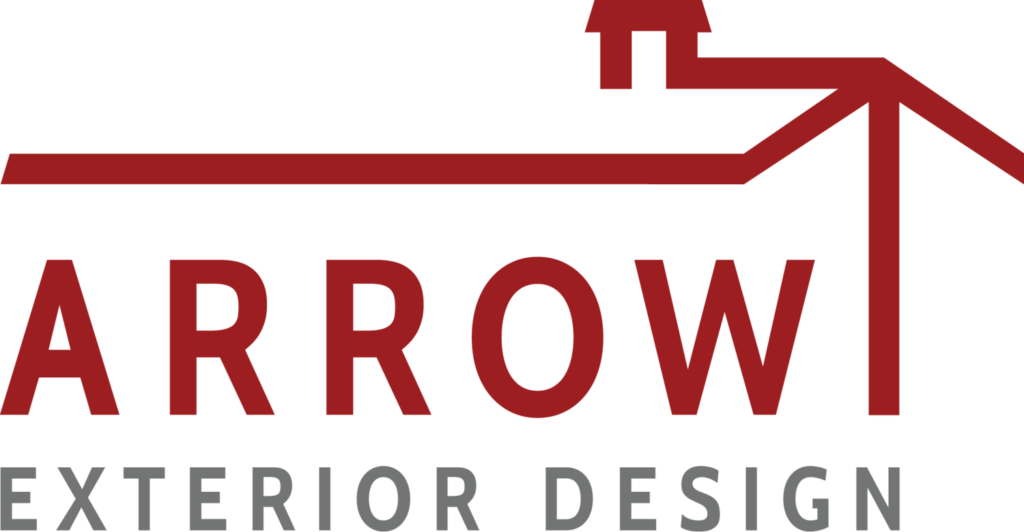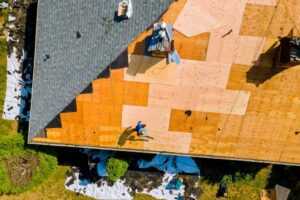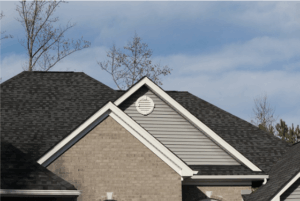People tend to underestimate the importance of a roof once it no longer functions as intended. The roof over your head keeps rain and snow from entering the house, protecting the building’s frame and contents. It also keeps pests, leaves, and windborne debris from entering the home and helps insulate the building interior regardless of the weather. Those are essential tasks, so your roof must perform as intended.
A damaged roof or one that leaks due to lack of maintenance can quickly cause extensive damage to the building and its contents. Roof inspections provide homeowners with peace of mind or the knowledge that a problem needs to be remedied. Ideally, a roof inspection identifies a minor problem before it becomes a severe problem. Repairing minor issues normally results in minor expenses, while repairing major problems brings significant headaches and costs.
When to Schedule Roof Inspections
Getting a roof inspection twice each year is recommended. However, there are times when it is best to schedule these inspections to ensure your home is protected.
In general, it is best to schedule a roof inspection before summer. This ensures your roof is in good condition moving forward. During winter, your roof is exposed to extreme temperatures, high winds, and significant moisture. This can compromise your roof and lead to an array of problems. A roof inspection after winter ensures there are no leaks and that the ice and water did not penetrate your roof, damage your gutters, or cause other harm.
Additionally, those living in areas that experience snowfall are best off scheduling their inspection in the autumn so you know the roof is ready for winter. You should schedule the inspection early enough to complete any needed repairs before winter sets in.
Other Times to Consider
There are a few other times when a roof inspection is an excellent idea to protect your home.
Buying or Selling a Home
You should have the roof inspected if you are purchasing a home to ensure its integrity, and you should consider having one performed when selling your home so you can use the inspection results as a selling point with potential buyers.
Severe Weather Event
You may need an inspection following a severe weather event that brings high winds or hail to your area. Your own visual inspection from the ground may reveal issues, but nothing replaces boots on the roof to ensure the weather did not cause damage.
Signs of Trouble
When you notice specific signs of trouble, a roof inspection may also be needed. Water spots and leaks in the ceiling immediately below the roof are clear warning signs, as are water stains or molds on interior and exterior walls. Likewise, it is time to schedule a roof inspection if an attic inspection reveals light coming through the roof or water stains on the insulation or other materials.
Types of Roof Inspections
The three primary types of roof inspection used today are manual, drone, and infrared. The manual inspection is old-fashioned but remains highly effective in most cases. It involves a qualified inspector climbing onto the roof to visually and manually inspect the roof for issues.
Inspections also occur using drones with cameras. Drone inspections see use on roofs with steep pitches and on relatively new roofs that do not show signs of damage. Of course, the inspector can access the roof for a manual inspection if an issue is spotted by a drone.
The third type of inspection uses a drone with an infrared camera to check for temperature variations in the roof that indicate a problem exists. The infrared inspection also can be followed by a drone or manual inspection.
Roof Inspection Components
Depending on the size and complexity of the roof, inspections can take 30 minutes to several hours. Roof inspections focus on four major components: structure, material, interior, and workmanship. Each is discussed in detail below.
Structure
Inspecting the structure involves confirming the integrity of the roof and the building frame. The inspector looks for sagging and no longer square surfaces, indicating potential rot or other damage. Water damage can also cause rot in the roof’s plywood sheathing, which may be apparent during the inspection.
The structural inspection assesses the soffit, fascia, and gutter system to ensure everything remains in place, is properly attached, and drains without problem. Chimney caps are checked for damage, and the inspection reviews the integrity of the mortar and the bricks for homes with brick chimneys. Finally, the attic vents are reviewed to ensure they are in place and working correctly.
Material
In addition to assessing the roof’s structural integrity, the inspector looks at the roofing materials for signs of wear and tear. Of course, the inspection varies based on the type of roofing materials, such as shingles, tiles, slate, metal, or other materials. The materials’ expected lifespan and the roof’s age influence the degree of inspection needed. Missing, broken, or rusted materials indicate that problems exist. So do moss and discoloration.
Since asphalt shingles are the most common roofing material in the country, it is worth noting that they degrade more rapidly as they approach the end of their life. A sign of their deterioration is the separation of the sand-like granules from the rest of the shingle, and the volume of granules found in gutters and downspouts indicates the remaining life of the shingles.
Interior
As mentioned when discussing signs of trouble, the inspector will check the building interior for water stains and inspect the attic for signs of damage, particularly mold and wood rot.
Workmanship
Though less commonly found, the inspector looks for instances where the roof was not installed correctly. These issues tend to appear where different roofing materials meet, so improperly fitted flashing and seals are example meeting points that may need fixing and repair.
Summary
The roof over your head plays a vital role in your home’s daily and long-term functioning. Roofs need proper maintenance, and whenever identified, you should have problems repaired as quickly as possible to ensure they do not develop into more severe problems.
As a homeowner, the ideal roofing inspector represents a trustworthy firm, has the expertise to identify problems, understands how to fix them, and can bring the resources needed to make the repairs before they become a bigger problem.
If you live in the Madison, Wisconsin, area and need a roof inspection, contact Arrow Exterior Designs at 608-283-9039.



